How is the New Year celebrated in China? The ubiquitous red color, lanterns, and dances
31. 5. 2024
What will you learn in this article?
Celebrate the Chinese New Year with the vibrant red color, lanterns, and dances that mark this momentous occasion.
As the most significant holiday in China and Chinese communities worldwide, it is a time for feasting, fireworks, parties, and parades.
The dragon dance and red-colored decorations are symbols of good luck and fortune.
Discover the happiness and joy that come with the right foods during this time.
Let’s join together to welcome the new year with excitement and optimism as we explore the traditions of the second most populous country in the world.
Chinese calendar
The historical Chinese calendar is lunisolar, meaning that dates are determined by both the moon and the sun. The months always begin at the new moon, when the moon is not visible in the night sky. The Chinese New Year begins with the new moon closest to the midpoint between the winter solstice and the vernal equinox, sometime between January 21 and February 20.
The fifteen-day celebrations begin with a family celebration called a “see-bye dinner” full of traditional New Year’s dishes and end with the Lantern Festival.
The Chinese calendar is closely linked to the Chinese zodiac, so each year is marked by one of the twelve zodiac animals.
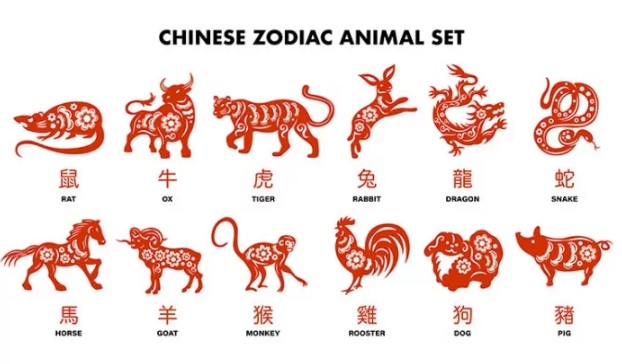
Although there is rarely a set “schedule” for New Year’s celebrations, some days are associated with specific rituals or festivities. However, it is necessary to remember that individual customs and traditions may differ in different regions of China.
The following table shows the date of Chinese New Year in the next ten years.
| Year | Chinese New Year date | Sign of the Zodiac |
| 2023 | January 22, 2023 | Hare |
| 2024 | February 10, 2024 | Dragon |
| 2025 | January 29, 2025 | Snake |
| 2026 | February 17, 2026 | Horse |
| 2027 | February 6, 2027 | Goat |
| 2028 | January 26, 2028 | Monkey |
| 2029 | February 13, 2029 | Rooster |
| 2030 | February 3, 2023 | Dog |
| 2031 | January 23, 2031 | Swine |
| 2032 | February 11, 2032 | Rat |
| 2033 | January 31, 2033 | Buffalo |
Easter time
Chinese New Year is also called Spring Festival or Spring Festival. This name became popular after Mao Zedong came to power in China in 1949. One of the goals of communism was to rid the country of all superstitions and religions, including traditional New Year celebrations.
In today’s China, the Spring Festival is associated with a week’s holiday. Before this holiday comes a busy travel season known as Chunyun when millions of people make their way home to celebrate the arrival of the new year with their loved ones. Chinese New Year is thus associated with mass travel and traffic complications.
Chinese New Year customs and traditions
Before the official start of this holiday, Chinese households are thoroughly cleaned. Cleaning symbolizes ridding the household of bad luck from the previous year and preparing the home for good luck in the coming year. In the first days after the New Year, for example, sweeping is not done so that the newly arrived luck is not swept away.
Traditional red paper lanterns and other decorations appear in cities and homes in the days or weeks leading up to the Chinese New Year. Red is the color of joy and happiness in Chinese culture and is strongly associated with New Year celebrations.
Christmas is considered a Christian holiday. Do the children get presents? Learn how Christmas is celebrated in China.
Firecrackers and red envelopes
During the first days of the Lunar New Year, younger family members receive bright red envelopes full of money. Known as hong bao (Mandarin) or lai see (Cantonese), these envelopes are traditionally given to children and single people. This custom is said to have originated from the tradition of using coins as an offering to ward off evil spirits.
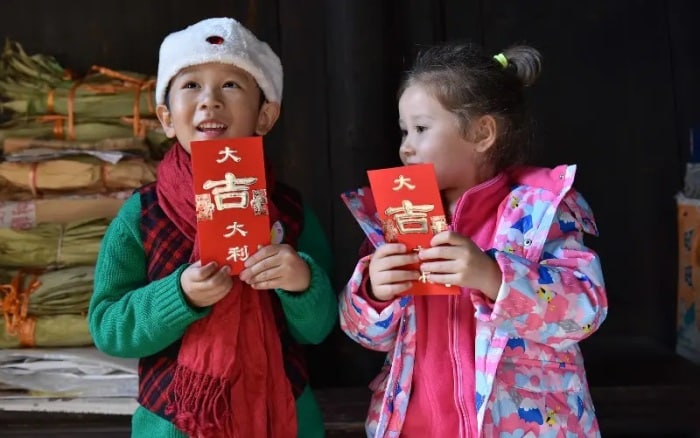
On Chinese New Year, you commonly see the 福 or fu character hanging on a square of red paper. The character fu, which means good luck, is hung upside down on the Lunar New Year. This is because the word come or begin is a homophone of the word upside down. With this visual pun, the symbol means that luck is coming or rolling your way.
Firecrackers and fireworks are often set off throughout Chinese New Year to ward off an ancient monster called the Nian and because it has become an exuberant way of celebrating.
Lion and Dragon Dance
Spectacular parades are also typical for the celebrations of the arrival of the new year, which include artists who perform martial arts or various types of traditional dances.
The purpose of the lion dance is to ward off evil spirits. It is performed by two performers inside a sophisticated lion costume who “act” as the front and back legs of the animal.
Similar articles

Christmas in the Mountains: Where to Go? We Have Great Tips for You! Get Inspired!
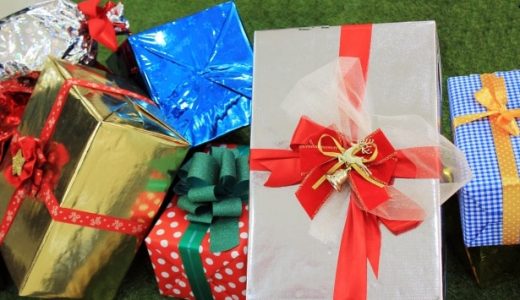
Worst Christmas Gifts to Avoid: A Survival Guide for Holiday Shopping

Where to Go to the Seaside for Christmas This Year? We Have Great Tips for You
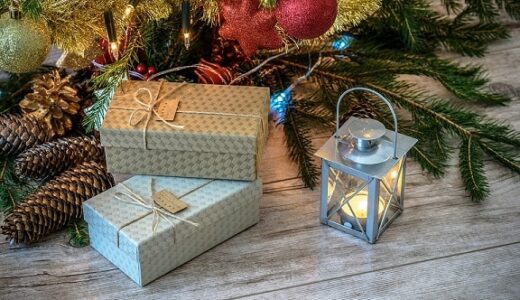
Creative Wrapping: Unique Ideas for Gift Presentation Beyond the Holidays
An important Chinese symbol is the dragon, so the Chinese New Year cannot be complete without the dragon dance. The latter is performed by several “puppeteers” holding poles on which a dragon mask is attached. The goal of the dance is to “make” the dragon move smoothly.
The third day of the Lunar New Year is often quieter and more gloomy than the previous ones. It is considered bad luck to visit friends or family or host visitors. This day is usually set aside to honor the memory of deceased relatives by visiting cemeteries or lighting incense or paper offerings in memory of loved ones.
Superstitions for the New Year
The Chinese New Year is also associated with various superstitions and taboos, the common goal of which is to maintain good luck. There are lots of little dos and don’ts. For example, one should not cry and argue; instead, one should only talk about good and happy things.
Scissors should not be used on Lunar New Year due to the belief that scissors could cut family ties.
People avoid wearing black or white because they are associated with sadness and instead dress in red, which “attracts” happiness.
During the first two days of the celebration, one should not wash or wash one’s hair, as it is also the birthday of Shuishen, the god of water, and you could wash away your luck.
Discover popular superstitions and traditions associated with New Year’s Day, and learn about their origins. Read more in our article!
Foods that bring good luck
Certain foods are eaten during Chinese New Year because of their symbolic meaning. The auspicious symbolism of these traditional Chinese New Year dishes comes from their pronunciation or appearance.
It depends not only on the dishes themselves but also on their preparation and methods of serving and consumption. The most common Chinese New Year dishes include dumplings, fish, chicken, spring rolls, and niangao.
The pronunciation of the word fish in Mandarin and many other dialects is “yú,” which is the same pronunciation as surplus or abundance. Fish is thus a typical dish on the Chinese New Year dinner menu. Chinese people always like to have surpluses at the end of the year because they think they can earn more in the next year if they save something at the end of the year.
With nearly two thousand years of history, jiǎozi dumplings are another classic lucky food eaten on New Year. Legend has it that the more dumplings you eat during New Year’s celebrations, the more money you can make in the new year.
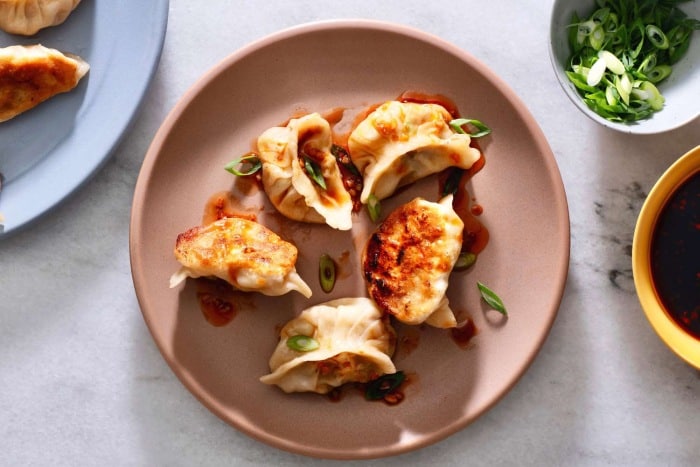
Chicken is a homophone for the 吉 character ji, which means happiness and prosperity. The chicken is usually served whole, including the head and claws, to symbolize unity and wholeness. Traditionally, a whole chicken is offered to the ancestors and gods for blessing and protection.
Chūnjuǎn spring rolls are named because they are traditionally eaten during the Spring Festival. They are a popular Chinese New Year dish, especially in Eastern China.
Niangāo cake is another lucky dish for Chinese New Year. The main ingredients of Nian Gao are glutinous rice, sugar, chestnuts, Chinese dates, and lotus leaves.
Lantern Festival
The Chinese New Year holidays culminate with the Yuan Xiao or Lantern Festival, which has a long tradition and is associated with various activities. Typical dishes are sweet rice balls and cakes. This holiday occurs on the fifteenth day after the Chinese New Year celebration begins.
The most notable part of the festival is the paper lanterns. Over the course of history, there have been countless variants of lanterns. They can be as small as the palm of your hand or as large as a car. People also make lanterns in symbolic designs; you can see giant fish, lotuses, or dragons.
A well-known variant is the longing lantern – Dēnglóng- representing luck, hope, success, and happiness. Some lanterns are given to newlyweds or couples without children to receive blessings.
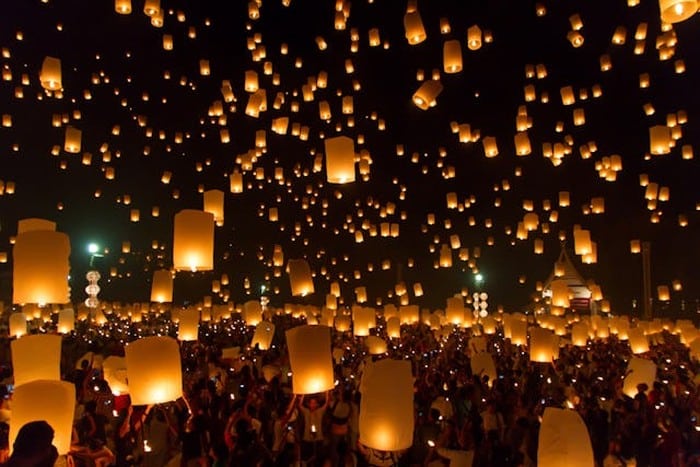
Pregnant women can receive several small lanterns with wishes for the health and safety of mother and child. In some regions, lanterns are also burned to determine the gender of the future child based on the shape of the ashes.
Riddles are also related to lanterns. Shop owners hang paper lanterns in front of their shops with riddles for passers-by who can solve them, presenting them with a small gift, for example, a tangerine, a symbol of wealth.
Chinese New Year Wishes
In China, the official language is Mandarin, in which the greeting Xīnnián hǎo, which means happy new year, or Xīnnián kuàilè, or happy new year, is used.
Many Chinese communities speak Cantonese, and a typical wish is Gōng xǐ fā cái. Literally, I wish you good luck and prosperity.
Would knowing how to wish a happy new year in Germany be helpful? Get inspired by our German New Year wishes.

